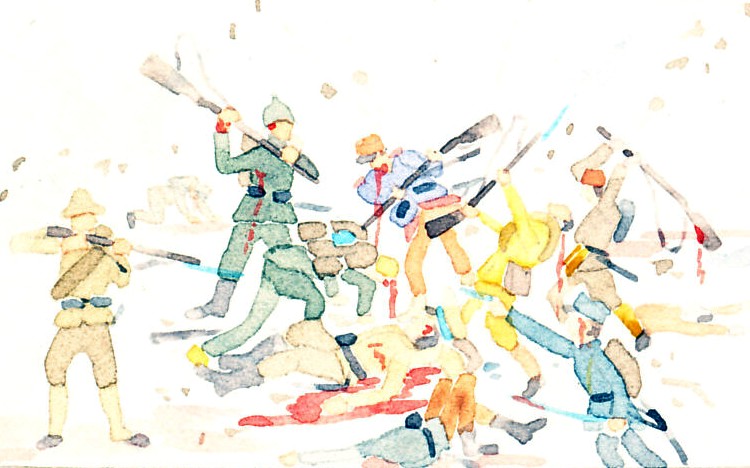A medal suspended on a green triangular ribbon with red stripes, bleeds. The medal reads 'Laeso Militibi' (or 'Militiri') MDCCCCXVIII (1918). Beneath the medal is written 'M?gegy', Another, or One More.
The image is based on the Austro-Hungarian wound medal which was instituted under Kaiser Karl whose profile is on the obverse. The red stripes indicate the number of wounds, three in this case. The actual medal reads 'Laeso Militi', To the Wounded Soldier (Latin), and shows the year as MCMXVIII.
The card was sent to Franz Moritos, and is postmarked Budapest, Hungary, November 16, 1918.

A medal suspended on a green triangular ribbon with red stripes, bleeds. The medal reads 'Laeso Militibi' (or 'Militiri') MDCCCCXVIII (1918). Beneath the medal is written 'M?gegy', Another, or One More.
The image is based on the Austro-Hungarian wound medal which was instituted under Kaiser Karl whose profile is on the obverse. The red stripes indicate the number of wounds, three in this case. The actual medal reads 'Laeso Militi', To the Wounded Soldier (Latin), and shows the year as MCMXVIII.
The card was sent to Franz Moritos, and is postmarked Budapest, Hungary, November 16, 1918.
Other views:
Larger, Back, LargerBack
